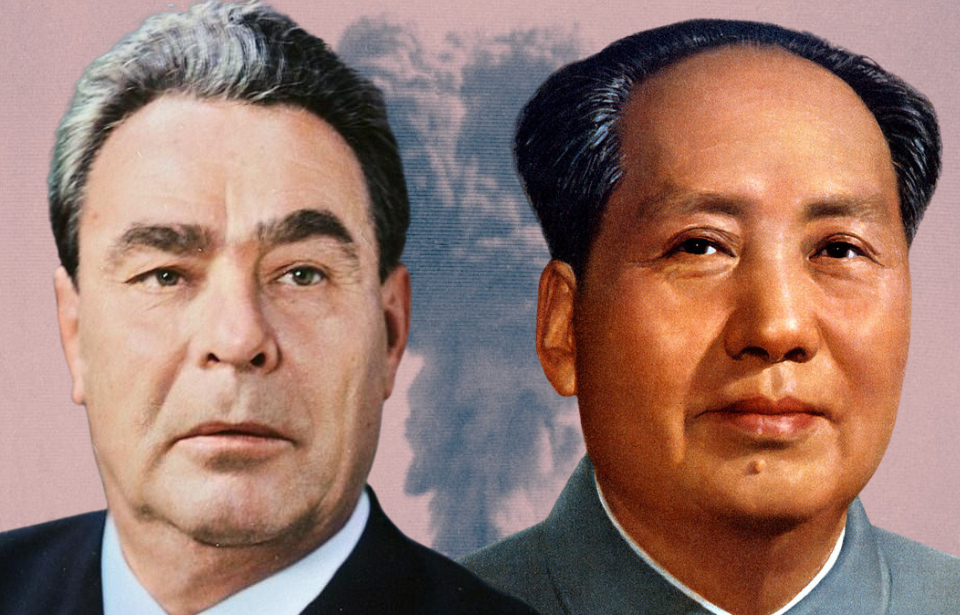In the early stages of the Cold War, Americans saw Soviet Russia and China as working together as one Communist “monster,” threatening to destroy everything in its path. Both shared similar political values, and have been allies during multiple conflicts. China and Russia may be a united front today, but 50 years ago, they were locked in a potential nuclear war that threatened to annihilate both countries.
Allies turn into bitter enemies
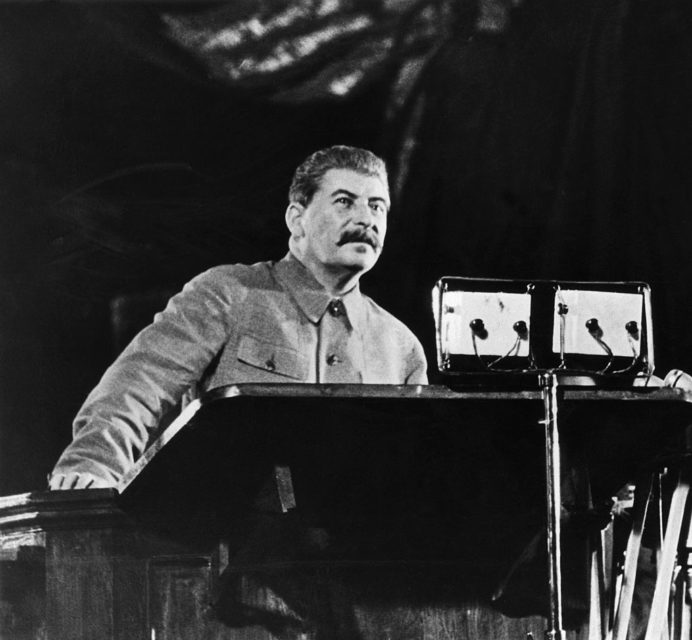
The relationship between Russia and China dates back to the 17th century, when conflict arose following the Qing dynasty trying to remove Russian settlers from Manchuria. The tension between the two nations ended with the Treaty of Nerchinsk, which placed a check on Russia’s continued expansion to the east.
Both countries underwent political upheavals in the early 1920s. Under the leadership of Vladimir Lenin, the newly-formed Soviet Union dismantled the remains of the Russian monarchy throughout the early 1920s. In China, the Communist Party (CCP) was formed by revolutionaries who’d turned to Marxism following the Russian Revolution. It joined with the Kuomintang (KMT), but their relationship deteriorated after a violent upheaval caused the CCP to go underground.
During the Long March of 1934-35, Mao Zedong became leader of the CCP, a title he’d hold until his death in 1976. The CCP and the KMT, led by Chiang Kai-shek, became locked in an intense conflict. This led the relationship between China and the USSR to sour, as the Soviet government chose to support Chiang over Mao.
Sino-Soviet split
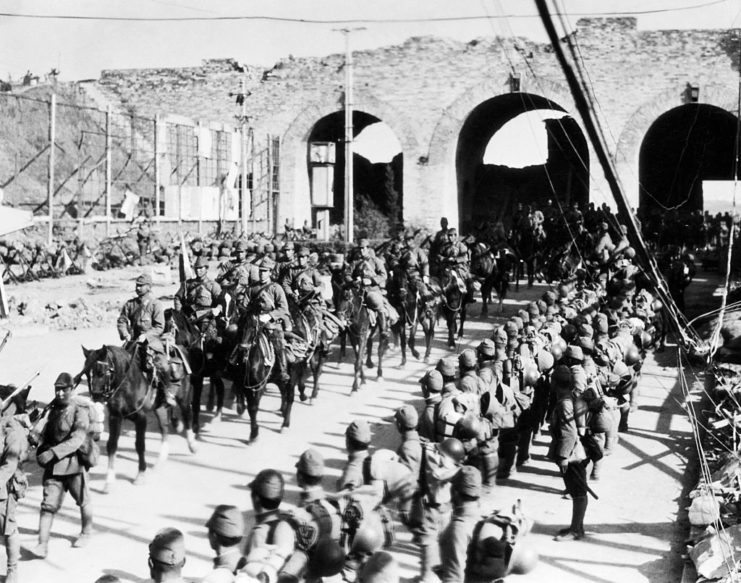
At the time, the Soviet Union was far more powerful than China. This allowed Lenin’s successor, Joseph Stalin, to directly involve himself in Chinese relations, ordering Mao to cooperate with Chiang during the Second Sino-Japanese War. Following the end of the conflict, the Kuomintang and the CCP resumed their own war over the fate of China’s leadership.
The CCP won and Stalin, once again, ordered Mao to collaborate with Chiang, instead of seizing power, a tactic in-line with the 1945 Sino-Soviet Treaty of Friendship and Alliance. In 1949, the CCP defeated the KMT and drove the party out of China, leaving Mao to become the country’s leader and craft a new nation through the Communist Revolution.
In 1950, Mao and Stalin signed the Sino-Soviet Treaty of Friendship, Alliance and Mutual Assistance, which provided China with the protection and aid of the USSR, in case of an American attack.
Rising tensions
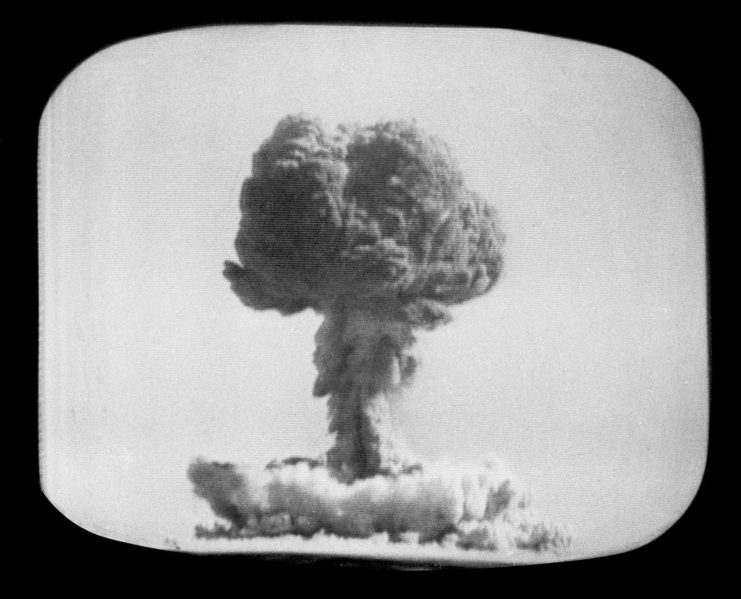
By the mid-1950s, the Soviet Union and China were struggling to find common ground over their Communist beliefs and enemies in the West. While China wanted to continue its aggressive stance toward Imperialist nations, the USSR saw the potential for a peaceful coexistence with the United States. As tensions escalated, the two scrambled to seize control of the “satellite” states along their shared border.
The feud played out in the public eye. In April 1960, China publicly slammed Soviet leaders, calling them revisionist. The USSR responded by withdrawing thousands of Soviet advisers from China and suspending financial and military aid, which led China to shift its focus even more toward gaining power. This would not only threaten the Soviet Union, but also prove to the world that the nation was a serious threat.
In 1964, China detonated its first nuclear weapon, making it the fifth country to become capable of nuclear war.
The explosive fight for the border
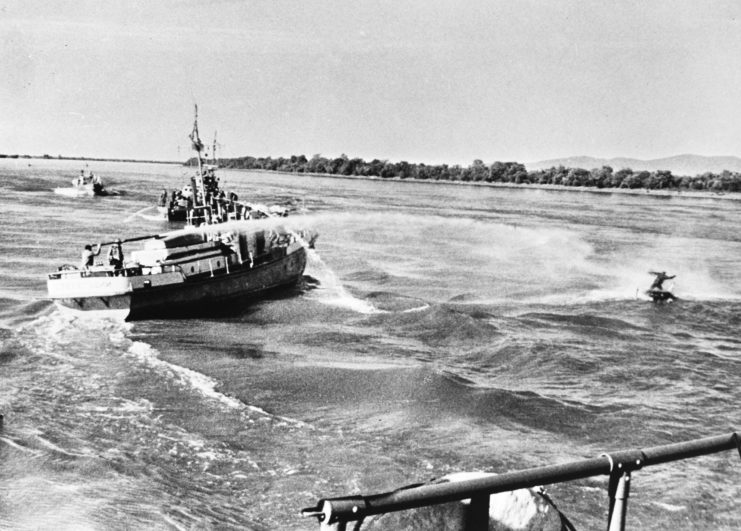
By the mid-1960s, Russian border patrols began to spot a growing Chinese military presence along the Sino-Soviet border. By 1968, there were 375,000 Soviet troops stationed there, along with 1,200 aircraft and 120 medium-range missiles. China stationed a whopping 1.5 million soldiers at the border. Coupled with the country’s new nuclear capabilities and increasingly hostile negotiations, it appeared conflict was inevitable.
Tensions came to a head in 1969 along the Ussuri, a poorly defined borderland in northeast China made up of tiny, uninhabited islands that became the driving factor of the border dispute. The Ussuri was designated a boundary between Russia and China in 1860, when the Convention of Peking removed Manchuria from China and gave it to Russia. Mao’s government legitimized the Chinese attack on the islands in the Ussuri by claiming the convention was forced upon the Chinese in the 19th century.
On March 2, 1969, Chinese troops killed a group of Soviet border guards in an ambush on Zhenbao Island. According to Mao, the attack was meant to teach the Soviets a “bitter lesson” and deter them from future action. In reality, the USSR was only further provoked by the ambush. Thirteen days later, the two nations squared off in a fight for Zhenbao Island, this time with more men and firepower. Following the battle, the Soviet Union shifted its strategy to lure China to the bargaining table.
A possible nuclear war between Russia and China
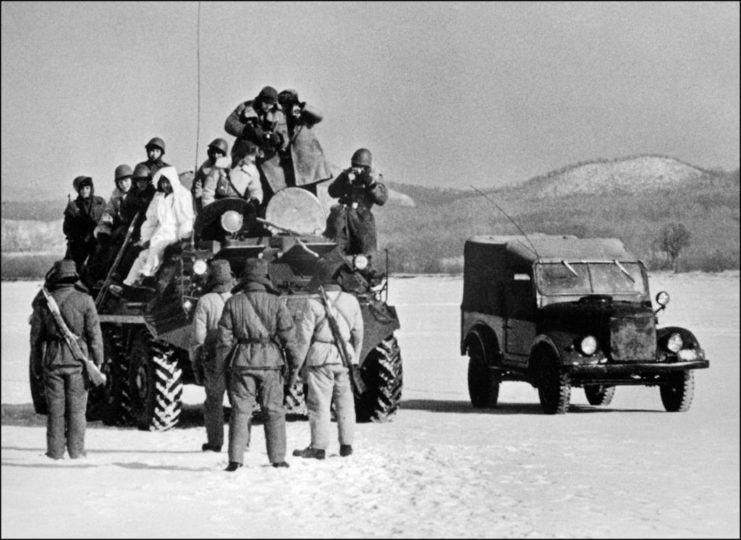
China initially dismissed the threats of nuclear war by Soviet Russia, but that changed in the summer of 1969, when CIA Director Richard Helms announced the Kremlin had been approaching foreign governments to ask how they would react to a nuclear strike on the Asian country.
More from us: Richard Nixon Once Tried to Nuke North Korea – While He Was Drunk
The announcement proved to the Chinese that the USSR’s threats were legitimate. Now faced with the prospect of nuclear war, China knew it could never match the strength of the Soviet forces. These threats, combined with growing tensions of the Vietnam War and the administration of US President Richard Nixon led Mao to realize it would be better to “ally with the enemy far away, in order to fight the enemy who is at the gate.”
Several weeks after the CIA’s announcement, China agreed to reach an agreement with the Soviet Union, thus putting to rest the potential of a nuclear war between the two countries.
